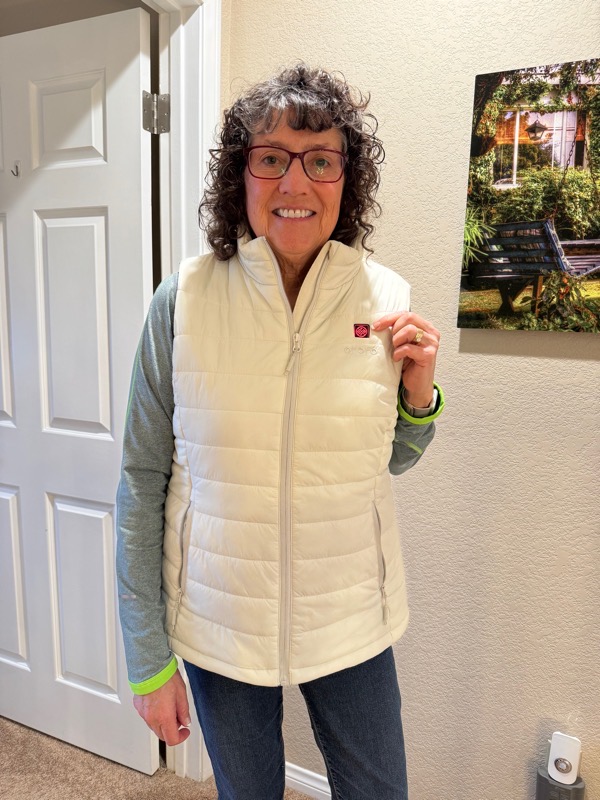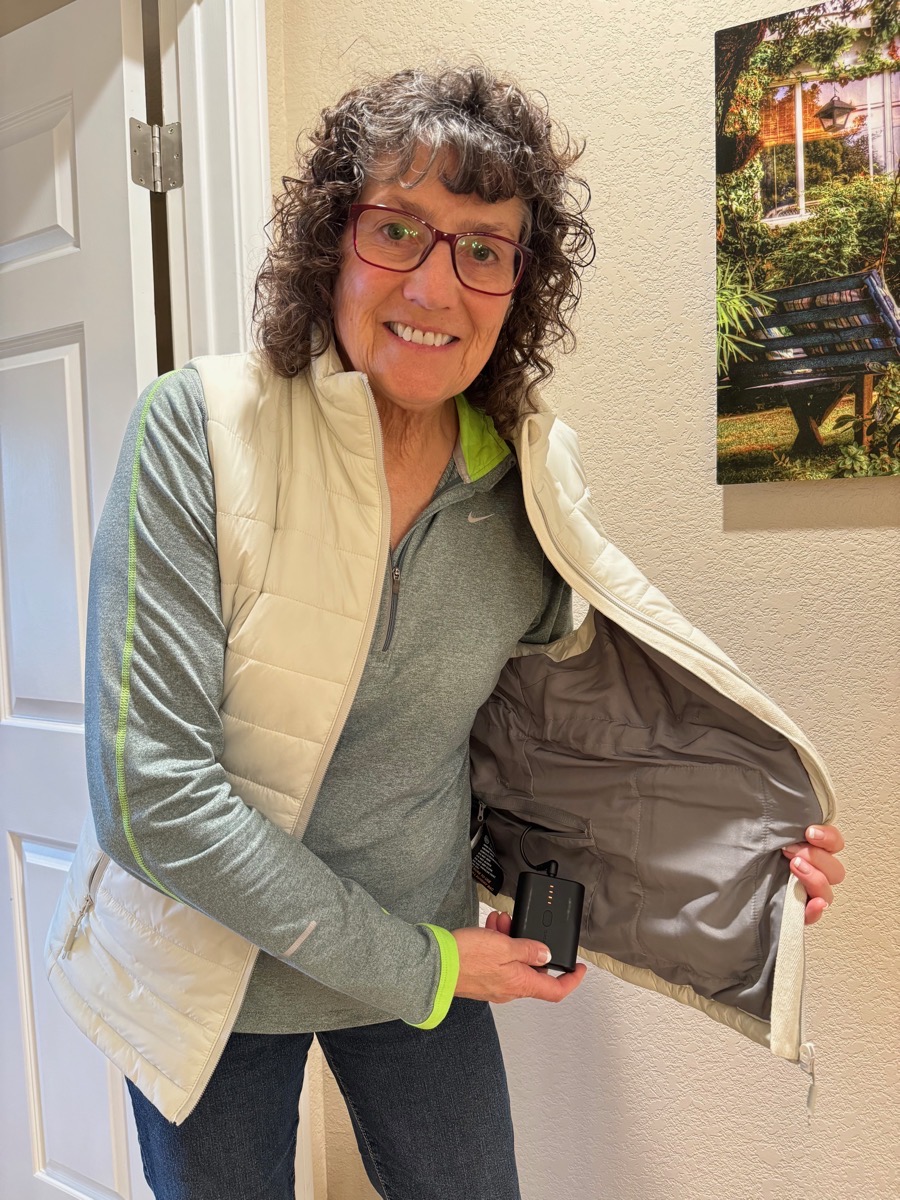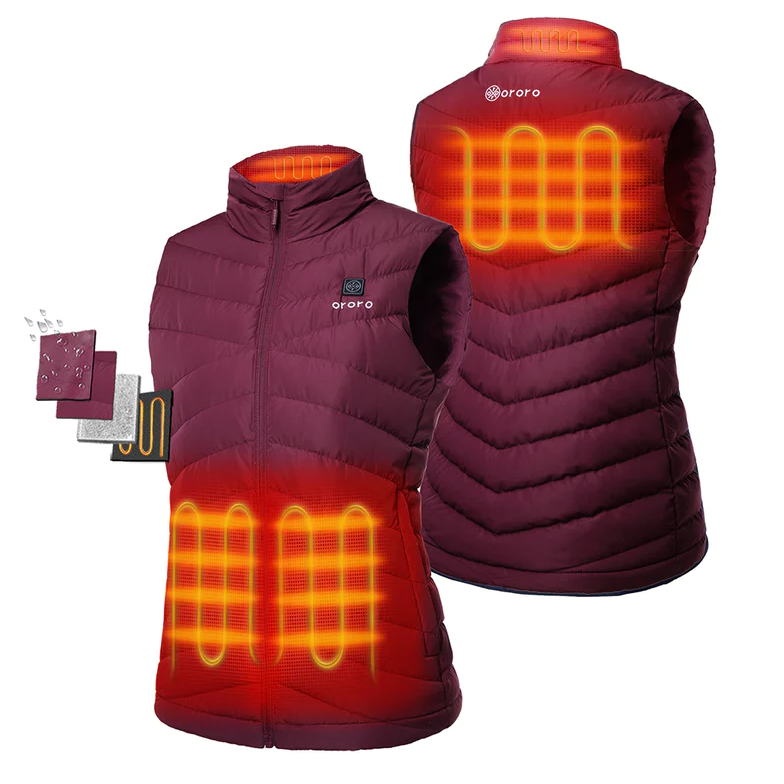
I live in Southern California, so we have very temperate weather. It doesn’t get all that cold, nor does it get all that hot since I’m relatively close to the ocean. However, if you’ve ever met someone who has lived here for any length of time, you’ll know that most of us are big babies when the temperature gets below 70°F.
You’ll hear people say, “It’s literally freezing outside” when it’s 66°. I’ve seen people walking along the pathway next to the ocean wearing UGG boots, down jackets, scarves, and knitted hats … when it’s 72° outside.
To be fair, many people are surprised that it’s cool at night in Southern California even in the warmer summer months. I grew up in Michigan where if it’s hot during the day, you also get these lovely hot summer nights. Lovely except for the swarms of mosquitos of course. Where I live now, the temperature will drop 15° at night so it’s always good to carry a sweater.
In general, I have adapted to the outdoor temperatures, but I’m often uncomfortably cold when inside my house. We had a new heat pump put into our home with two zones so we can separately change the temperature upstairs and down with a fancy app, but now we’re constantly adjusting the temperature up and down. I’ve also determined that temperature is not absolute. I can be happy at 69° inside in the morning, and freezing at the same temp at night. Maybe it’s a humidity thing, I don’t know.
I’m an avid crocheter, so I have a good dozen blankets available, and Sandy made me a gorgeous quilt, so I can layer up when I’m on the couch wearing a sweatshirt to combat this frigid 69° air, but that doesn’t help me when I’m sitting in the kitchen for a meal, or working at my desk.
And then one day Barry Fulk came to visit. We decided to go to a wine bar (because Barry and wine bars go very well together). We knew we might be seated outside, and I was shocked to see Barry just put on a hoodie sweatshirt while I was reaching for a down jacket, scarf, and gloves. It was March for crying out loud. At first, I assumed it was because Barry is from Chicago originally, but that wasn’t why he knew he’d be comfortable in a hoodie.
It was because it was a heated hoodie. And that’s why this whole story fits in a tech podcast. His heated hoodie is from a company called ORORO from OROROwear.com, and they make not just hoodies. They make vests, jackets, parkas, pants, gloves, and mittens.
I was intrigued by this idea of heated outerwear from ORORO and began perusing the ORORO website in pursuit of the perfect thing to buy. I finally settled on a vest, which is something I’ve never worn before. I argued myself for a long time about it but I’m delighted with my choice, specifically because of my use case.
Before I tell you about the vest and how it works, I have to say the customer service on my purchase was fantastic. I ended up buying and returning two of them because they didn’t fit the way I wanted them to, and there were no questions asked and no cost to me to be so finicky.
The ORORO vest uses a 4800 mAh battery they call the “Mini 5K” to power coils sewn into the fabric to heat the wearer. The battery sits in a little zipper pocket that sits kind of on my left hip. One of the reasons I exchanged the size was because the battery made the jacket fit a little snugly on my hips. I like my clothing roomy anyway.

The battery charges via USB-C and can be used as a charger for other devices using its USB-A port. The one thing I wish was different is that it connects to the jacket using a proprietary circular cable, so you can’t use just any old battery to power your clothing from ORORO. Since it’s proprietary, it will cost you $80 for a replacement. That’s pretty steep for a battery, but in addition to the black one that came with my vest, they do come in red, pink, purple, or orange so that’s fun.
The wires in the vest are in two places: the upper back across the shoulder blades, and on the front across your stomach. There are even more heated wires across the back of the collar.

This placement of heating is well thought out. By heating your collar you don’t feel the need for a scarf. By heating the belly area, when your hands are in the pockets they get heated too, and the heat across the shoulders warms your upper body.
The vest all by itself is pretty warm, especially since my primary use case is to be cozier inside my own house. I know that sounds goofy, but how much does it cost in energy to heat a big house vs. just heating little ol’ me?
If you want to use the heated function of the ORORO, there’s a button on the left side high up on the chest. If you press and hold it for a second or so, it will glow red indicating it’s on the highest heat setting. If you press it again it will turn white, indicating medium heat, and a third press will turn it blue for the least amount of heating.
I usually start with the red setting because remember, I’m freezing in my house at 69°. After a while, I realize I’m feeling much better and I’ll look at the button and it will have changed from red down to white. I’m assuming that’s intentional, and that it’s not some kind of bug. If I’m still cold, I can always press it again to go back to red.
The ORORO site says the mini 5K 4800 mAh battery will last for 10 hours of run-time for all ORORO heated vests, heated jackets, and heated hoodies. That’s on the low setting – they say 6 hours for medium and 3 hours on high. I haven’t timed it but I’ve definitely worn it from early afternoon till late into the evening and not run out of juice.
I suspect the way it steps itself down when I’m heated up pretty well contributes to the long battery life. They say it takes 4 hours to charge the battery with a 5V3A charger. The battery has a button that lights up one to four indicator lights to show you how charged it is, but there’s no accessible way to determine the battery level.
The indicator light is a fun conversation piece – no one can miss that you’re wearing an unusual piece of clothing. Even my 3-year-old granddaughter notices it – she likes to push the button to see the colors change! If you don’t like attention to your clothing, this might be a downside, but as a chatty nerd, I like to tell people about my jacket.
I said early on I hadn’t worn a vest before. It turned out to be the perfect thing for my indoor needs. I can wash dishes or eat without getting sleeves all messy, and paired with a long-sleeved shirt, it’s pretty cute if I have to say so myself.
I am always always always cold on planes. We went to Texas a few weeks ago, and I decided to see how it would be to travel with my heated vest from ORORO. I was quite comfortable on the plane, without having to carry a terribly bulky jacket. Carrying it was tricky because it’s slippery like all down vests, but it’s also weighted down on one side by the battery. I soon figured out that carrying it with my arm through both arm holes balanced it nicely.
On our flight out, my jacket did give the TSA inspectors pause. I had told the agent before I put it on the conveyor belt that it was heated, but I still got the extra bomb wipedown just in case. It didn’t take long but if I’d been in a hurry it might have been a problem. On my way back, I was much more explicit. I showed the agent the battery and explained that the jacket was full of wires to heat it. That time I sailed through.
I asked Barry, who is a very frequent traveler if he has a strategy for getting through TSA. He said they’ve never questioned it, but they do look askance at his corkscrew on occasion.
If the ORORO line of heated warm-weather gear sounds interesting to you, keep your eye out for sale opportunities on the website. Every time I’ve been to the site, something is on sale. Maybe the exact jacket you first see isn’t, but a different color might be, or a slightly different style.
The Women’s Classic Heated Vest in Off-white that I bought is $169 but it’s 25% off because of their end-of-season sale right now. Note that the battery is sold separately but you could buy it in purple and get 25% off for that too.
As I sit cozy in my house, saving on my electric bill, I’m reminded of the saying of that sage expert on weather, Bart Busschots. He always says, “There’s no such thing as bad weather, there’s just the wrong clothes.”

